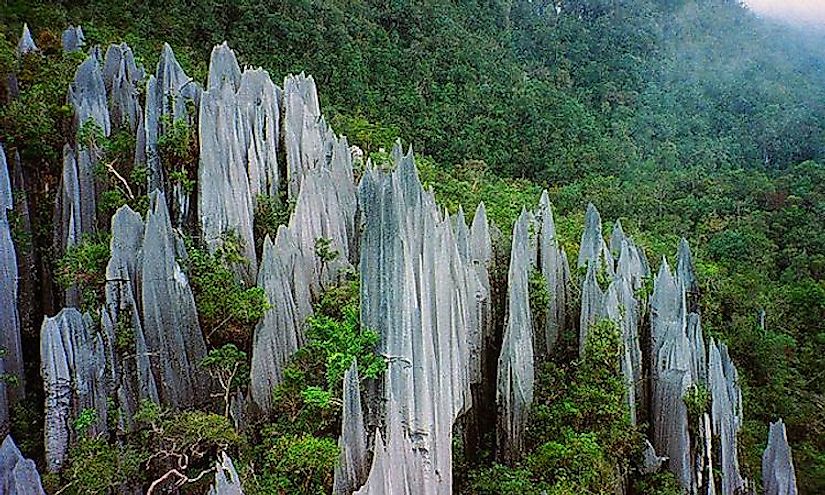UNESCO World Heritage Sites In Malaysia

Malaysia is a country located in South East Asia. It consists of thirteen states and three federal territories. The country’s economy has been on a constant rise since independence and has been fueled by natural resources. Malaysia is a megadiverse ecological region with a high number of species and high levels of endemism which has promoted ecotourism in the entire country. More than half the country is covered by forests highly dominated by dipterocarps, a family of tropical lowland rainforest trees. Some of the country’s UNESCO World Heritage Sites are discussed below
UNESCO World Heritage Sites In Malaysia
Gunung Mulu National Park
The Gunung Mulu National Park is located in Miri Division, Sarawak State, Malaysia. It is famous for its caves, limestone karsts, rock pinnacles, and cliffs on Mount Mulu. The park covers an area of 204 square miles with an equatorial rainforest setting. There are several animal species found in the park like eight species of hornbill, twenty-seven species of bat, several mammal species, and amphibians. The park is rich in plant species due to the topography of the park as well as the soil types found in the region. It was inscribed on the UNESCO world heritage list as a natural site in 2000.
Kinabalu Park
The Kinabalu Park, established in 1964, is located in Sabah, Western coast of Malaysia. it covers an area of 291.1 square miles and is located near Mount Kinabalu. It is one of the national parks of Malaysia and an important ecoregion in Malaysia. It is home to 326 bird species, 100 mammal species, 110 snail species, and a considerable number of plant species. It is among the popular tourist attraction sites in the country. Kinabalu Park is under the management of Sabah Parks and was designated as a natural world heritage site in 2000.
Lenggong Valley Archaeological Sites
The Lenggong Valley Archaeological Sites in Lush Lenggong Valley is one of the oldest archaeological sites with evidence of the early man. It is famous for its cave that provides records of the early technology, Paleolithic tools, Neolithic tools, and metal age tools used more than two million years ago. Due to the high numbers of the sites in the region, archaeologists have deduced the site was occupied by a large population. It has remained an important well-preserved site with valuable archaeological deposits. It was inscribed on the UNESCO world heritage list in 2012 as a cultural site.
Melaka and George Town
The Melaka and George Town is a cultural site listed as aUNESCO world heritage site in 2008. it consists of various historical centers including Melaka and George Town. The site has played an important role in contributing to the general growth of the two cities. Most buildings in these two towns demonstrate the early stages of the history of as early as the 15th century and the varying periods of the Portuguese, Dutch, and British.
Threats And Conservation Efforts
The UNESCO world heritage sites in Malaysia have played a major role in the conservation of the remaining part of the lowland tropical forests and other endemic animals in the various parks. The slash-and-burn method of cultivation has led to the destruction of the various forms of life in the country, but conservation efforts by the responsible authorities managing these parks have kept it to the minimal.
UNESCO World Heritage Sites In Malaysia
| UNESCO World Heritage Sites in Malaysia | Year of Inscription; Type |
| Gunung Mulu National Park | 2000; Natural |
| Kinabalu Park | 2000; Natural |
| Lenggong Valley Archaeological Sites | 2012; Cultural |
| Melaka and George Town - Malacca Straits Trade Centers | 2008; Cultural |







